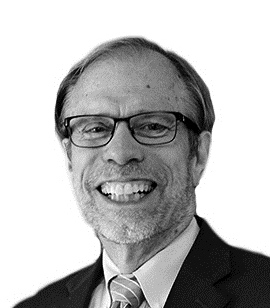As if the bishops needed anything more to worry about these days, Gallup released a poll just before Easter documenting a sharp decline in religious membership among Americans over the past two decades.
Unfortunately, the percentage decline for Americans belonging to the Catholic Church was one of the steepest. What this means for the future is a subject of growing concern in the wake of the COVID-19 pandemic and the drop-off in Mass attendance that the pandemic forced.
Gallup, which has been monitoring Americans’ affiliation with churches, synagogues and mosques for more than 80 years, says that last year was the first time that the membership number has dropped below 50%.
According to the polling company, 47% of Americans belong to some house of worship, down from 50% in 2018 and 70% in 1999. The third millennium, far from inspiring a religious revival, has seen a rapid shrinkage in religious practice in what has been one of the most religious countries in the developed world.
A growing number of Americans are not expressing any religious preference, and in all age groups, the number that are explicitly saying they are unaffiliated with any church is growing. This includes 31% of millennials and 33% of Generation Z — that is, the future.
When looked at in terms of religious groups, the largest decline is for Catholics. From 1999 until today, the percentage of Catholics has declined from 76% to 58%, double the percentage decline for Protestants. Other studies have noted a decline in sacramental marriages and baptisms among Catholics as well, also boding ill for the future.
For Catholics, the past two decades span the peak of the sexual abuse crisis. The corresponding lack of faith in the institution might be mirroring broader trends in society, however, including a decline across religious faiths and demographic groups that suggests strong cultural forces at work.
While the United States remains a religious country compared to Europe, for example, the pace of decline in the past 20 years suggests no quick turnaround in the trend line. Should the decline pick up speed in the wake of the pandemic, business as usual for many churches will not be an option.
One consequence of this decline might be an intensifying of political divisions. That is the conclusion of Shadi Hamid, writing in The Atlantic. He notes the sharp decline in church membership and the growth in “nones.” But contrary to what secularists may hope, he says society may be becoming more divided, not less.
“As Christianity’s hold, in particular, has weakened,” he writes, “ideological intensity and fragmentation have risen. American faith, it turns out, is as fervent as ever; it’s just that what was once religious belief has now been channeled into political belief. Political debates over what America is supposed to mean have taken on the character of theological disputations. This is what religion without religion looks like.”
This has impacted the Catholic Church as well, where the melding of political ideology with ostensibly religious belief has meant that the fault lines in the Church increasingly mirror political fault lines.
The polarization of the faithful has been accompanied by an apocalyptic retreat to “a smaller and purer church,” on the one hand, and a willingness to embrace unhesitatingly the trends and values of a larger culture increasingly unmoored from Christian teaching on the other.
How Church leaders will steer their dioceses between these twin temptations, what the Church of the future will look like and how Christians will bear witness in an increasingly fractious secular culture are the stark challenges of this millennium's first century.
Erlandson, director and editor-in-chief of Catholic News Service, can be reached at [email protected].










